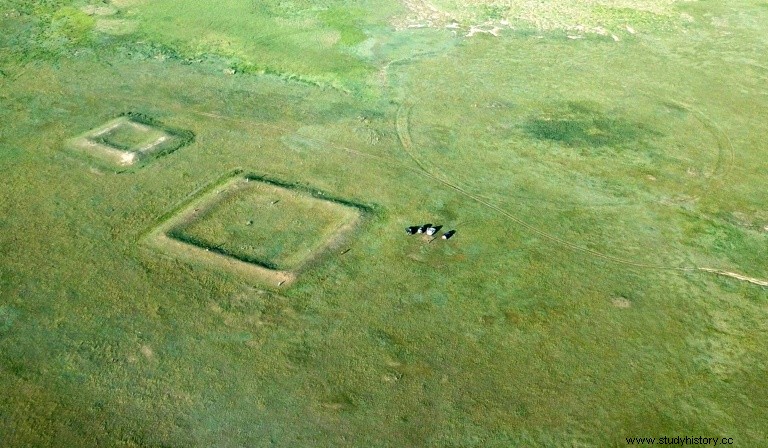Thousands of kilometers from China, Israeli archaeologists have reconstructed the route of a portion of the Great Wall forgotten by historians.

Aerial view released by the Hebrew University of Jerusalem on June 7, 2020 showing the route of a portion of the Great Wall of China in the Mongolian steppe
Thousands of kilometers from China, Israeli archaeologists have reconstructed the route of a portion of the Great Wall forgotten by historians and built in the Mongolian steppe to control nomadic populations, according to a study made public on Tuesday, June 9, 2020.
"A major project of the Middle Ages"
"The construction of this section of the Great Wall is a major project of the Middle Ages which is paradoxically very little mentioned in historical documents" , Professor Gideon Shelach-Lavi, member of the Chair of Asian Studies at the Hebrew University of Jerusalem and director of research, told AFP.
This is the first time that this part of the wall has been the subject of such in-depth study, perhaps because of its very remote geographical location, suggests the archaeologist who, to determine the precise route, went traveled there with his team and used satellite and aerial imagery.

Aerial view released by the Hebrew University of Jerusalem on June 7, 2020 showing the route of a portion of the Great Wall of China in the Mongolian steppe (The Hebrew University of Jerusalem/AFP - -)
The length of the Great Wall estimated at 21,000 km including the missing parts
Classified as a UNESCO World Heritage Site, the Great Wall is an aggregate of military fortifications built in northern China from the 3rd century BC in order to defend the country against invasions from the north. Its total length is estimated at about 9,000 kilometers, or even 21,000 km if we count the missing parts.
Even further north, stretch the 737 kilometers of a wall made of earth unearthed by Professor Shelach-Lavi's team. Anchored in the steppe and covered with grass, it forms the "Northern Line", straddling present-day China, Russia and Mongolia.
This line is also nicknamed "Wall of Genghis Khan" in reference to the famous warrior born in the 12th century and who, through conquests, founded the immense Mongol empire.

Photo released by the Hebrew University of Jerusalem on June 7, 2020 of Professor Shelach-Lavi studying a section of the Great Wall in the Mongolian steppe (The Hebrew University of Jerusalem/AFP - -)
"Scholars originally thought this section was built to defend the local population from the Great Khan and his nomadic hordes" , says Mr. Shelach-Lavi. "But it seems that it was not a military wall to guard against invasions."
The relatively moderate size of the wall (about two meters) and its location on low and therefore not very strategic areas suggest that it was more intended to monitor and control the movements of nomadic populations and their herds.
"It was sort of an internal political tool" , concludes the professor.
